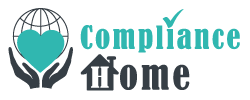
School Web Filters
School Internet filters are a legal necessity as per the Children’s Internet Protection Act (CIPA) and, in some US states, a requirement of State legislation. In order to be allowed to apply for grants and E-Rate discounts, schools must configure technology to block malicious website content.
Many states have now passed their own legislation to ensure minors are kept safe from obscene website content. Parents are also applying pressure on schools to carefully control the content that can be accessed by their children while attending school.
School Internet filters are not a legal requirement in many parts of the United States, although even schools that do not apply for E-Rate discounts are more and more deciding to implement website content controls. In addition to ensuring children are stopped from accessing harmful content, school Internet filters are a crucial cybersecurity defense and can block phishing attacks and malware downloads.
Each solution is unique, although school Internet filters usually involve three levels of control. The most common method used to block website content is the use of blacklists. Blacklists are lists of websites known to be leveraged for phishing, host exploit kits or include malware.
Blacklists can also be used to prevent inappropriate and illegal website content. For example, the Internet Watch Foundation keeps a blacklist of all webpages discovered to host images of child sexual abuse. By using the blacklists, all websites and webpages on the list will be blocked.
Most school Internet filters also permit website content to be blocked with category filters. Categories cover pornography and other adult content, betting, gaming and dating websites. Category filters, along with blacklists, are the simplest way of ensuring compliance with CIPA regulations. Most filtering solutions also allow whitelists to be established. Whitelists are exception lists that permit users to visit specific websites that would otherwise be blocked by category filters.
Some school Internet filters also permit filtering by keywords. If a webpage includes a blocked keyword or exceeds a set percentage of restricted keywords, users will be stopped from gaining access. This control is particularly useful for blocking sites that have yet to be added to blacklists.
Filtering controls can be applied across an organization for all users or set for different user groups – staff, students, or IT departments for instance. Some solutions also offer time-based management controls, permitting school Internet filters to be set during specific hours.
ComplianceHome is a registered trademark. Copyright © 2025 ComplianceHome. All rights reserved.